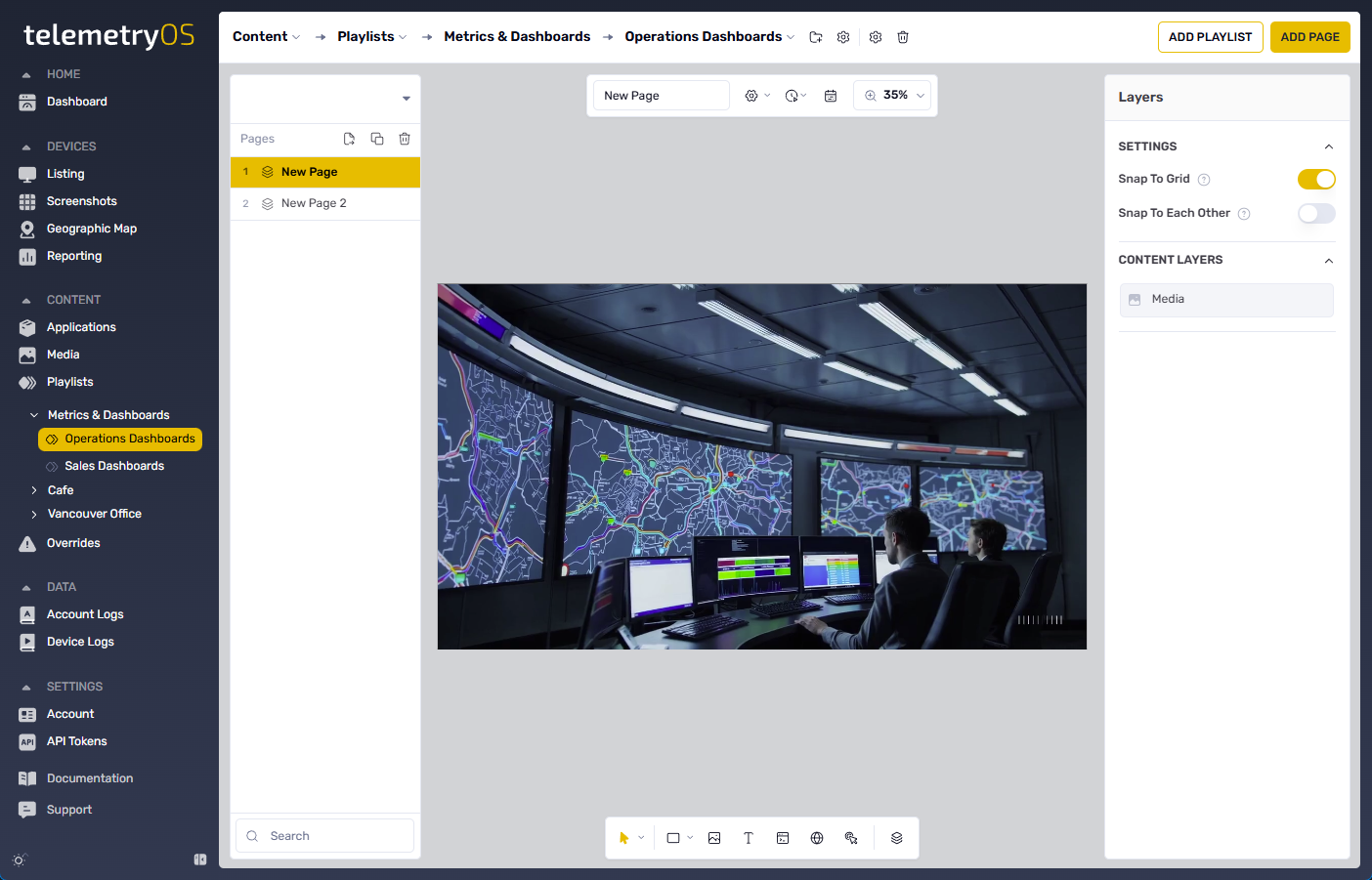Playlist Publishing
Enable draft/approval workflows and control who can publish
Playlist Publishing establishes formal content governance workflows where playlist modifications require explicit publishing approval before appearing on devices. This draft/approval architecture prevents accidental or unauthorized content deployment while enabling collaborative playlist development where content creators and content approvers maintain distinct roles.
Publishing Workflow Architecture
When Playlist Publishing is enabled, content modifications operate in a draft state that remains invisible to devices until explicitly published. This separation between editing and deployment enables content development without immediate device impact, supporting iterative refinement and collaborative review before content reaches audience screens.
The publishing system tracks changes at the playlist structure level—page additions/deletions, page reordering, and page-level configuration changes trigger publishing requirements. Component-level modifications within pages (individual application settings adjustments) may not require republishing, as they update within the already-published page context.
This change-tracking granularity balances content governance (preventing unauthorized structural changes) with operational efficiency (allowing minor refinements without approval overhead).
Publishing Configuration
Publishing workflows require account-level enablement that transforms all playlist modifications into draft-based operations. This configuration establishes the approval authority and notification routing for pending content publications.

Publishing configuration operates globally across the account—all playlists adopt the draft/approval model when publishing is enabled. Individual playlists cannot opt out of publishing requirements once account-level publishing is active, ensuring consistent governance across all content.
Notification configuration designates email recipients for publication approval requests. These email notifications include direct links to pending draft playlists, enabling streamlined review and approval workflows without requiring recipients to navigate through the interface to locate pending changes.
Notification routing supports single-recipient or distribution list configurations, enabling shared approval responsibility across teams or escalation to secondary approvers when primary approvers are unavailable.
Publication Lifecycle
Playlist modifications enter draft status immediately upon save when publishing workflows are enabled. Draft content remains editable through iterative refinement cycles without affecting deployed content. Content creators can continue modifying draft playlists until they judge the content ready for deployment review.

Publication approval workflows support two operational modes based on user permissions:
Publish Request workflow (standard users) submits draft content for approval review. Designated approvers receive email notifications containing review links and can approve or reject publication requests. This workflow maintains content governance by routing all publications through authorized reviewers.
Direct Publication (users with publishing permissions) bypasses approval workflows and deploys content immediately. This permission level suits trusted content managers or scenarios requiring immediate content updates without approval delays.
Published playlists synchronize to devices within seconds for online devices. Offline devices receive published content upon reconnection, with the publishing system maintaining deployment queue tracking to ensure all targeted devices eventually receive current content.
Republishing Behavior
Republishing operations explicitly re-deploy unchanged content to devices, forcing content synchronization refresh. This capability addresses edge cases where initial publication may have failed due to transient network issues, device offline states, or synchronization anomalies.
Republishing does not create new content versions—it re-delivers existing published content through the same distribution mechanisms as initial publication. This operation proves valuable when devices display outdated content despite publication completion, or when content delivery must be verified across all targeted devices.
Content Governance Benefits
Publishing workflows provide several content governance advantages for larger teams:
Prevents accidental deployment: Draft state prevents unfinished or unauthorized content from reaching devices Enables collaborative review: Multiple stakeholders can review content before publication Maintains content quality: Approval workflows ensure content standards adherence Provides deployment control: Explicit publishing decisions replace automatic content propagation Supports compliance: Approval trails provide audit evidence for regulated environments
Organizations requiring formal content approval should enable publishing workflows. Smaller teams or development environments may prefer immediate deployment without approval overhead, operating in the default direct-publish mode where playlist saves immediately affect devices.
Updated 9 days ago